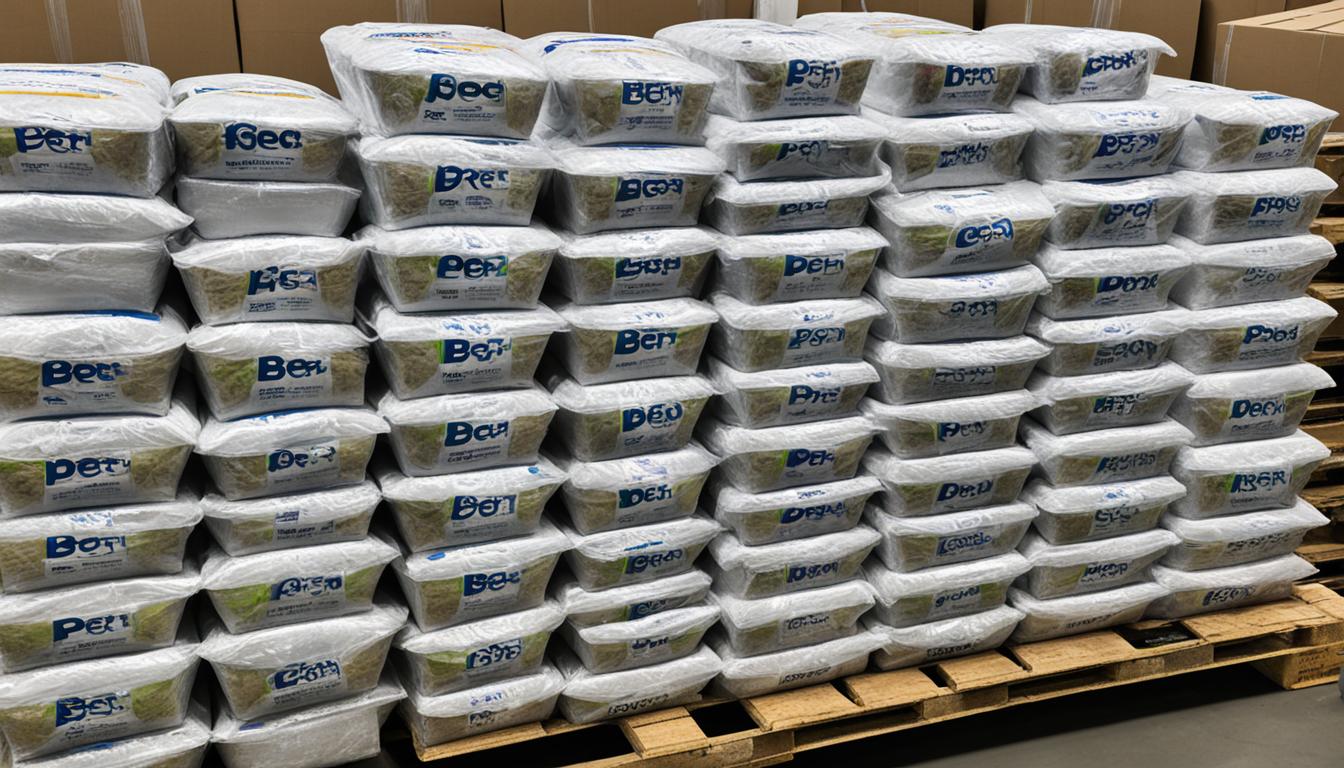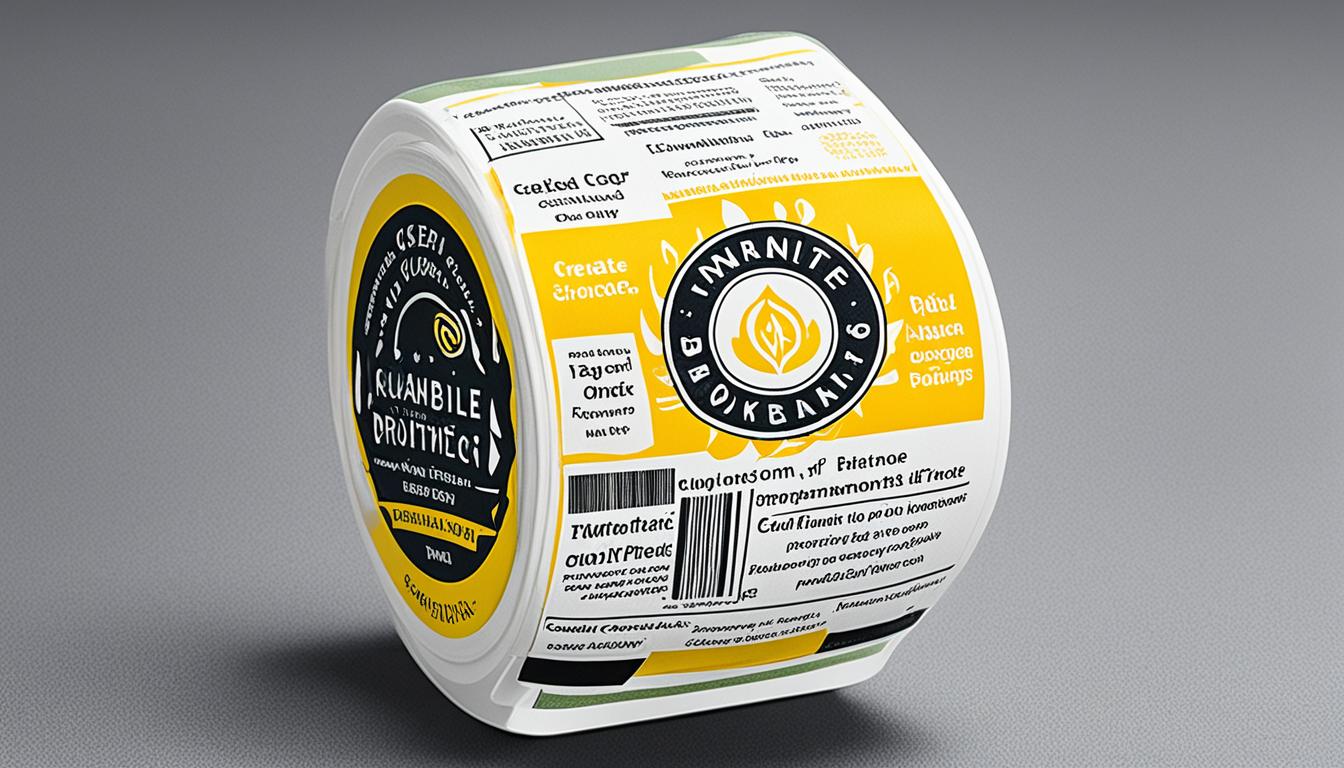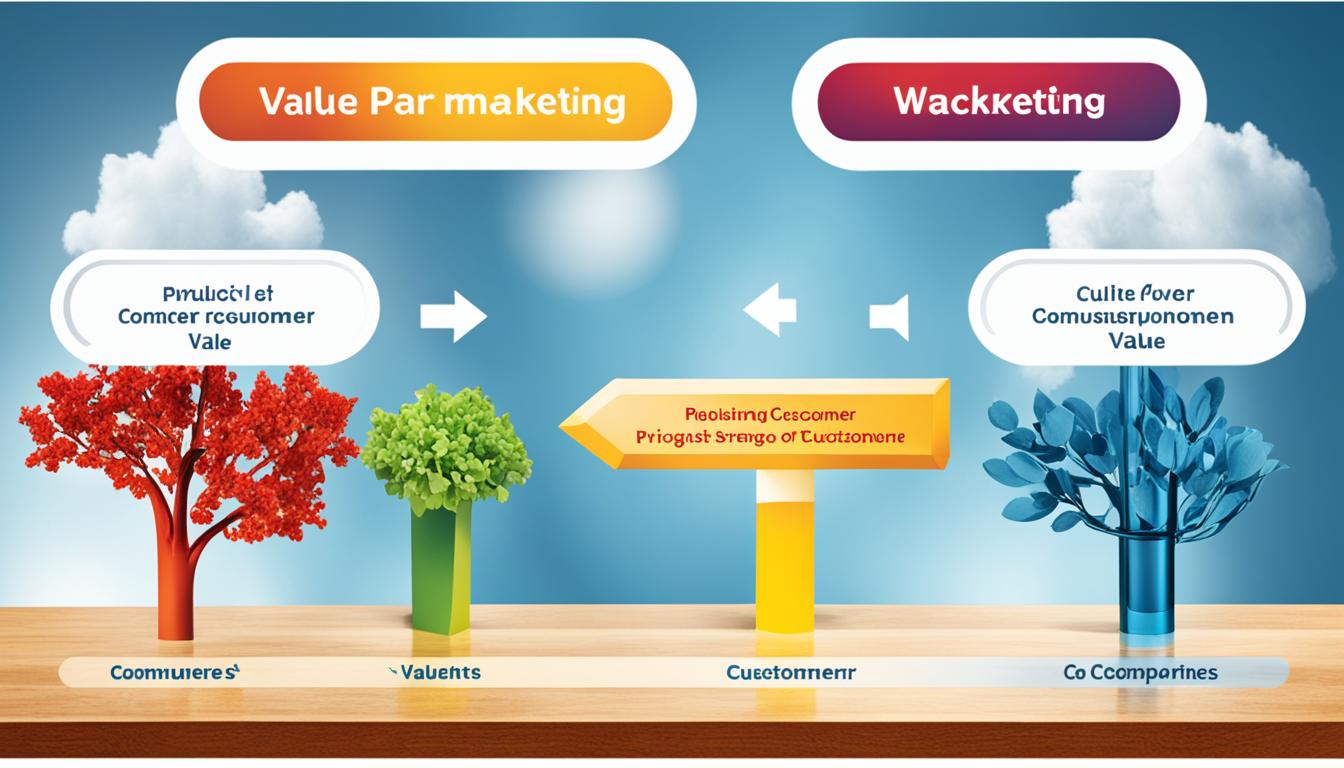Understanding and optimizing cost per order (CPO) is essential for businesses in the competitive e-commerce landscape. CPO is a metric that calculates the total cost incurred from a customer making a purchase, helping businesses determine their profit from each order.
To accurately calculate CPO, various expenses need to be taken into account, including marketing/advertising costs, packaging costs, fulfillment costs, shipping costs, cost of goods sold (COGS), and storage costs. By dividing the total order expenses by the number of orders received during a specific timeframe, businesses can obtain their CPO.
Key Takeaways:
- CPO is the calculated total cost incurred by a customer making a purchase.
- It includes marketing, packaging, fulfillment, shipping, COGS, and storage costs.
- To calculate CPO, divide total order expenses by the number of orders received.
- CPO helps businesses determine profitability on a per-order basis.
- Optimizing CPO involves analyzing and reducing various cost factors.
Understanding Cost Per Order Calculation
Calculating the cost per order is an essential metric for businesses to evaluate their expenses and optimize profitability. By understanding the cost per order formula, businesses can gain insights into the various components that contribute to this metric.
The cost per order formula takes into account several expenses, including:
- Customer acquisition costs (CAC)
- Packaging costs
- Fulfillment costs
- Shipping costs
- Cost of goods sold (COGS)
- Storage costs
The formula for calculating cost per order is:
(Customer acquisition costs + packaging costs + fulfillment costs + shipping costs + COGS + storage costs in a time period) / number of orders in that same time period.
This formula allows businesses to determine their average cost per order and make informed decisions on cost optimization strategies.
Example Calculation:
Let’s consider a hypothetical e-commerce business, ABC Electronics, that had the following expenses in a given month:
| Expense | Amount |
|---|---|
| Customer Acquisition Costs (CAC) | $10,000 |
| Packaging Costs | $5,000 |
| Fulfillment Costs | $7,000 |
| Shipping Costs | $3,000 |
| Cost of Goods Sold (COGS) | $20,000 |
| Storage Costs | $2,500 |
| Number of Orders | 1,000 |
Using the cost per order formula:
(($10,000 + $5,000 + $7,000 + $3,000 + $20,000 + $2,500) / 1,000) = $47
Based on this calculation, ABC Electronics has an average cost per order of $47 for the given time period. Understanding this metric allows the business to identify areas for cost reduction and improve profitability.
Factors Affecting Cost Per Order
The cost per order in e-commerce is influenced by various factors. Understanding these factors is crucial for businesses to identify areas for cost reduction and improve profitability. Let’s explore the key factors that can affect the cost per order:
High Cost of Goods Sold (COGS)
The cost of goods sold (COGS) plays a significant role in determining the cost per order. High COGS indicates expensive manufacturing costs, which can increase the overall cost per order. Businesses should carefully analyze their production costs and explore ways to optimize manufacturing processes to reduce COGS.
Shipping Costs
Shipping costs can vary depending on the location where orders are fulfilled. The distance between the warehouse and the customer’s location, as well as the shipping method chosen, can impact shipping costs. To mitigate high shipping costs, businesses can negotiate discounted rates with shipping carriers or explore alternative fulfillment options.
Storage or Warehousing Costs
Inventory storage or warehousing costs can add up if products are not being sold quickly. Businesses need to carefully manage their inventory to avoid unnecessary storage costs. Implementing efficient inventory management systems and strategies can help minimize storage costs and improve cost per order.
Table 1: Comparison of Factors Affecting Cost Per Order
| Factors | Impact on Cost Per Order |
|---|---|
| High COGS | Increases cost per order |
| Shipping Costs | Varies based on location and shipping method |
| Storage or Warehousing Costs | Can add up if inventory is not sold quickly |
By addressing these factors effectively, businesses can optimize their cost per order and achieve higher profitability. In the next section, we will discuss strategies to reduce the cost per order and improve overall operational efficiency.
Strategies to Reduce Cost Per Order
Businesses can implement various strategies to optimize their cost per order and improve profitability. By carefully analyzing their processes and making strategic changes, they can reduce expenses and streamline operations. Here are some effective strategies:
- Map out workflow processes: By mapping out the workflow processes involved in order fulfillment, businesses can identify bottlenecks and areas for improvement. Streamlining these processes can help reduce labor and time costs, ultimately minimizing the cost per order.
- Process orders faster: Minimizing the time it takes to process orders can have a significant impact on cost per order. By implementing efficient order management systems and optimizing fulfillment operations, businesses can reduce labor costs and improve overall efficiency.
- Negotiate shipping rate discounts: Shipping costs can be a significant expense for e-commerce businesses. By negotiating shipping rate discounts with carriers or using bulk shipping services, businesses can reduce their cost per order and improve their bottom line.
- Outsource fulfillment: Outsourcing fulfillment to a third-party logistics (3PL) provider can be a cost-effective solution for businesses. 3PL providers have the expertise and infrastructure to handle order processing, warehousing, and shipping, allowing businesses to focus on core operations while reducing fulfillment costs.
Benefits of Outsourcing Fulfillment
Outsourcing fulfillment can offer several benefits to businesses, including:
- Reduced overhead costs: By outsourcing fulfillment operations, businesses can eliminate the need for in-house warehousing, equipment, and labor costs.
- Scalability and flexibility: 3PL providers have the resources to scale operations based on demand fluctuations, allowing businesses to adapt quickly to changing market conditions.
- Expertise and efficiency: 3PL providers have specialized knowledge and experience in fulfillment operations, ensuring efficient order processing and timely delivery.
- Improved customer experience: Outsourcing fulfillment can result in faster order processing and delivery times, leading to higher customer satisfaction and repeat business.
Leveraging these strategies and outsourcing fulfillment can help businesses optimize their cost per order, reduce expenses, and improve overall profitability.
| Strategy | Key Benefits |
|---|---|
| Map out workflow processes | – Identify areas for improvement – Streamline operations – Minimize labor and time costs |
| Process orders faster | – Reduce labor costs – Enhance operational efficiency – Minimize fulfillment time |
| Negotiate shipping rate discounts | – Lower shipping costs – Lessen fulfillment expenses – Improve cost per order |
| Outsource fulfillment | – Reduce overhead costs – Scale operations efficiently – Access specialized expertise |
Setting Cost Per Order Targets
Setting cost per order targets is a critical component of effectively managing profitability in e-commerce. By understanding the economics of your business and considering factors such as pricing strategies, lifetime customer value, and marketing channels, you can establish realistic benchmarks to optimize your cost per order.
One important consideration when setting cost per order targets is evaluating your pricing strategy. Analyze your product margins and market demand to determine the optimal price point that maximizes profitability without sacrificing sales volume. It’s important to strike a balance that ensures both customer satisfaction and financial sustainability.
Another factor to consider is the lifetime value of your customers. Understanding the potential revenue that a customer can generate over their entire relationship with your business is key to setting cost per order targets. By factoring in repeat purchases, referrals, and upselling opportunities, you can optimize your expenses based on the long-term value of each customer.
Additionally, it’s essential to assess the performance of different marketing channels in driving sales and acquiring customers. Evaluate the cost per order for each channel and allocate your marketing budget accordingly. This data-driven approach allows you to focus your resources on channels that deliver the best return on investment.
To effectively manage cost per order, it’s crucial to track and analyze relevant data regularly. By monitoring key metrics such as customer acquisition costs, fulfillment costs, and average order value, you can identify areas for improvement and make data-informed decisions to optimize your cost per order.
Here’s an example table highlighting the cost per order targets for different marketing channels:
| Marketing Channel | Cost per Order Target |
|---|---|
| Social Media Advertising | $15 |
| Search Engine Marketing | $10 |
| Email Marketing | $8 |
| Affiliate Marketing | $12 |
By setting clear cost per order targets for each marketing channel, you can effectively manage your expenses and evaluate the performance of your campaigns. This enables you to make data-driven adjustments to optimize your cost per order while achieving your desired profitability.

The Impact of Marketing Channels on Cost Per Order
Different marketing channels play a significant role in determining the cost per order and their effectiveness in driving sales. It is crucial for businesses to track and understand the cost per order by channel to effectively allocate their marketing budget. By analyzing the performance of different channels, businesses can optimize their marketing strategies to improve cost efficiency and maximize profitability.
When evaluating the cost per order by channel, it is important to consider various factors such as customer acquisition costs, conversion rates, and the lifetime value of customers. This enables businesses to identify high-performing channels and invest their resources accordingly, while also minimizing spending on underperforming channels.
Determining Marketing Channel Effectiveness
To evaluate the effectiveness of marketing channels in driving sales and reducing cost per order, businesses can utilize various metrics such as:
- Conversion Rate: The percentage of website visitors who make a purchase. This metric helps assess the effectiveness of each marketing channel in generating sales.
- Return on Ad Spend (ROAS): The revenue generated from advertising campaigns relative to the cost of those campaigns. ROAS helps measure the profitability of different marketing channels.
- Customer Acquisition Cost (CAC): The cost incurred to acquire a new customer through a specific marketing channel. Comparing the CAC across different channels helps identify the most cost-effective acquisition methods.
- Lifetime Value (LTV): The total value a customer generates over the course of their relationship with a business. Understanding the LTV can help determine the long-term profitability of different marketing channels.
By monitoring these metrics and analyzing the data, businesses can gain insights into the performance of their marketing channels and make data-driven decisions to optimize their cost per order.
Complementing Channels for Improved Performance
It is essential to consider how different marketing channels complement each other to improve overall performance. By leveraging multiple channels, businesses can reach a wider audience and enhance their brand visibility. For example, using social media advertising to generate awareness and drive traffic to the website, and then retargeting those visitors with personalized email campaigns can result in more effective and efficient customer acquisition.
However, it is important to avoid making abrupt decisions to cut spending on a particular channel. While it may seem logical to reduce investment in a channel with a high cost per order, doing so without considering its impact on customer acquisition may lead to unintended consequences. The interconnectedness of marketing channels should be taken into account to avoid negatively impacting the overall cost per order and sales performance.
Example Cost Per Order by Channel
| Marketing Channel | Cost per Order |
|---|---|
| Google Ads | $20 |
| Facebook Ads | $15 |
| Email Marketing | $10 |
| Organic Search | $5 |
This example table illustrates the cost per order for different marketing channels. It is clear that focusing on improving organic search visibility can significantly reduce the cost per order. By understanding the cost per order by channel and implementing effective strategies, businesses can allocate their marketing budget wisely and optimize their overall cost per order.
The Role of Organic Rankings in Cost Per Order
Organic rankings play a crucial role in the cost per order (CPO) for e-commerce businesses. Weak organic rankings can have a significant impact on the CPO by driving customers to paid advertising channels. By investing in search engine optimization (SEO) to improve organic rankings, businesses can reduce their reliance on paid advertising and lower the overall cost per order over time.
Improving organic rankings requires creating valuable content on your website and optimizing your online presence. By producing high-quality, relevant content that aligns with user intent, search engines are more likely to rank your website higher in organic search results. This increased visibility can attract organic traffic, reducing the need for paid advertising and consequently decreasing the associated costs.
With strong organic rankings, businesses have the opportunity to tap into a steady stream of targeted traffic without paying for each click or impression. This leads to a more cost-effective customer acquisition strategy and ultimately improves the overall profitability of the business.
One effective way to improve organic rankings is through keyword optimization. By conducting thorough keyword research and strategically incorporating target keywords into your website’s content, meta tags, and headings, search engines can better understand the relevance and authority of your website. This can result in higher organic rankings and increased organic traffic.
Benefits of Improving Organic Rankings:
- Reduced reliance on paid advertising channels
- Lower cost per order
- Increased profitability
- Long-term sustainable traffic
- Improved brand visibility and credibility
By prioritizing SEO efforts to improve organic rankings, businesses can achieve a higher ROI on their marketing efforts, as organic traffic tends to have a higher conversion rate compared to paid traffic. This not only reduces the cost per order but also improves overall efficiency and effectiveness in customer acquisition. Investing time and resources into SEO is a long-term strategy that yields ongoing benefits for cost optimization and business success.

Tips for Managing Cost Per Order
In order to effectively manage cost per order, businesses should employ the following tips:
1. Track Expenses Accurately
To gain insights into cost per order, it is essential to track expenses accurately. This includes recording all costs associated with the supply chain, such as marketing/advertising costs, packaging costs, fulfillment costs, shipping costs, and storage costs. By maintaining detailed records, businesses can have a comprehensive understanding of their expenses and identify areas for cost optimization.
2. Analyze Relevant Data Regularly
Analyzing data on a regular basis is crucial for optimizing cost per order. By examining sales data, customer acquisition costs, and other relevant metrics, businesses can identify trends and patterns that impact their cost per order. This analysis can help in making informed decisions and implementing strategies to reduce costs and increase profitability.
3. Set Realistic Benchmarks
Setting realistic benchmarks for cost per order is important for monitoring and improving performance. By establishing achievable targets, businesses can focus on cost optimization and evaluate their progress over time. It is important to consider industry standards, market conditions, and the unique aspects of the business when setting these benchmarks.
4. Utilize E-Commerce Analytics Solutions
Using e-commerce analytics solutions can simplify data tracking and provide real-time insights. These tools enable businesses to easily monitor and analyze key metrics related to cost per order, such as customer acquisition costs, fulfillment costs, and shipping costs. With the help of these solutions, businesses can make data-driven decisions to optimize cost per order and improve profitability.
By implementing these tips, businesses can effectively manage cost per order, track expenses accurately, analyze relevant data regularly, and set realistic benchmarks. This enables them to identify areas for cost reduction and make informed decisions to optimize their cost per order.
Conclusion
Effective management and optimization of the cost per order is a critical aspect of improving profitability for e-commerce businesses. By understanding the formula for calculating the cost per order and considering key factors that influence it, businesses can implement strategies to reduce costs and set realistic targets. Regular analysis of relevant data allows for informed decisions and ongoing optimization of the cost per order.
Reducing the cost per order is an ongoing process that requires attention to detail and constant evaluation. By mapping out workflow processes, optimizing supply chain efficiency, and negotiating shipping rate discounts, businesses can lower expenses and improve profitability. Outsourcing fulfillment to a third-party logistics provider further streamlines operations and reduces costs.
By setting realistic cost per order targets and tracking expenses accurately, businesses can effectively manage their profitability. It is also crucial to leverage e-commerce analytics solutions to gain real-time insights and make informed decisions. With a holistic approach and continuous monitoring, businesses can successfully optimize their cost per order, reduce expenses, and improve overall profitability.
FAQ
What is cost per order?
Cost per order (CPO) is the total calculated cost that is incurred by a customer making a purchase and determines the profit made from a single order.
How is cost per order calculated?
To calculate the cost per order, you divide the total order expenses by the number of orders received during a specific timeframe.
What factors affect the cost per order?
Factors that can influence the cost per order include high cost of goods sold (COGS), shipping costs, and storage or warehousing costs.
What strategies can be used to reduce cost per order?
Strategies to reduce cost per order include mapping out workflow processes, processing orders faster, negotiating shipping rate discounts, and outsourcing fulfillment.
How should cost per order targets be set?
Cost per order targets should be set by considering factors such as pricing strategies, lifetime customer value, and marketing channels, to ensure they are realistic and aligned with the business’s goals.
How do marketing channels impact cost per order?
Different marketing channels can have varying costs per order, and understanding the cost per order by channel is essential for effective budget allocation and performance optimization.
What is the role of organic rankings in cost per order?
Weak organic rankings can push customers to paid channels, increasing the cost per order. Investing in search engine optimization (SEO) can help reduce reliance on paid advertising and lower the cost per order over time.
What tips can help in managing cost per order?
Tips for managing cost per order include tracking expenses accurately, analyzing relevant data regularly, and using e-commerce analytics solutions for real-time insights.
How does managing cost per order improve profitability?
Managing cost per order allows businesses to optimize their expenses, improve profitability, and stay competitive in the e-commerce industry.








